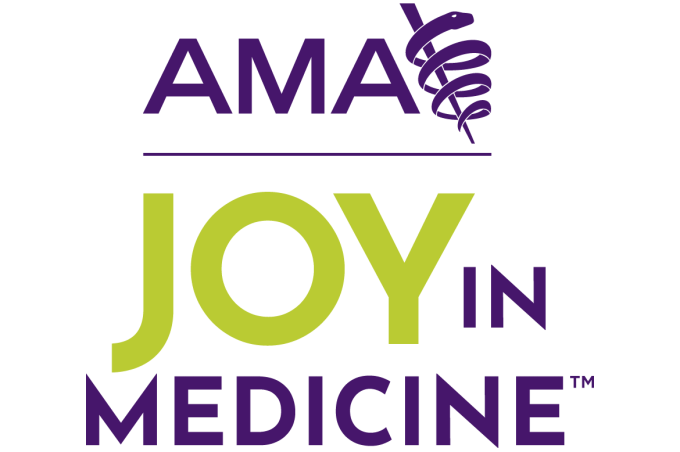Within the intricate web of maternal care, The Southeast Permanente Medical Group took a technology-based approach to solve an all-too-common health problem in pregnant and postpartum patients: hypertension. Wielding the power of remote patient monitoring like a beacon of hope against the formidable foe of hypertension, the medical group aims to rewrite the narrative of maternal health.
The Atlanta-based medical group developed a remote-monitoring system to keep a close eye on blood pressure trends for patients who were about to give birth or had done so recently. That is because in 2019, physicians noticed a serious health problem trending among their patients while they were redesigning prenatal and postpartum care.
“Once we saw the demographic makeup and the disease burden in our patients, we saw a high prevalence of hypertension and preeclampsia,” said Ericka C. Gibson, MD, MPH, an ob-gyn and physician program director of Perinatal Safety and Quality at The Southeast Permanente Medical Group. The medical group is a member of the AMA Health System Program that provides enterprise solutions to equip leadership, physicians and care teams with resources to help drive the future of medicine.
“Understanding the impact of hypertensive disorders on maternal morbidity and mortality, we knew that we had to really create systems to specifically address hypertension,” Dr. Gibson added. “By specifically addressing hypertension, we were hoping that we would close racial disparities in outcomes by focusing on diseases that have a higher prevalence in our patients of color.
“Now that we’re four years into the program, we have gotten to a place where it is an integral part of our prenatal care, postpartum care, but it was a new process,” she said.
This effort proved to be successful for the medical group, as documented in a study that Dr. Gibson and her colleagues co-wrote, which was published in Pregnancy Hypertension in March. When compared with historical controls, more than 1,000 pregnant patients who were enrolled in remote monitoring were:
- 56% more likely to have their blood pressure measured within 20 days of discharge.
- 43% more likely to have normal BP postpartum.
- 27% likelier to be on an antihypertensive medication.
- 50% more likely be evaluated by a physician within 20 days of discharge.
The need for such an intervention is clear. That is why the AMA is advocating to improve maternal health. The rate climbed to 32.9 maternal deaths per 100,000 live births in 2021, up from 17.4 in 2018, according to the Centers for Disease Control and Prevention (CDC). Georgia, meanwhile, has among the highest maternal and hypertension mortality rates in the country.
Moreover, hypertensive disorders affect 16% pregnancies in the U.S., says CDC research. Among deaths during a hospitalization for delivery, 31.6% had a diagnosis documented for a hypertensive disorder in pregnancy.
Leveraging technology and education
Physicians at The Southeast Permanente Medical Group began with a remote patient-monitoring system they had in place for adult medicine. Adding a BP cuff that is synced to a Bluetooth-enabled smartphone app allows patients to measure their blood pressure from home.
“Blood pressures then flow into their electronic medical record,” said Dr. Gibson. “If they met a certain threshold, either high or low, there would be a system alert that would flow to a team of people who were monitoring. That alert signals the team to reach out directly to patients to ask them if they're having any preeclampsia symptoms so we can intervene early.”
Dr. Gibson and her colleagues also conduct substantial patient education during prenatal treatment. This helps pregnant and postpartum patients get ready to track their BP at home.
“We educate patients on how to check their blood pressure, what constitutes high blood pressure, and the signs and symptoms of preeclampsia, so they know when to notify their medical team,” Dr. Gibson said. “The feedback that we received from our patients was that they felt very educated about hypertension and they felt comfortable checking it.”
Enrolling early and ensuring follow up
Physicians can enroll their patients any time they might be considered at risk for hypertension. Whether hypertension was in their family history, or they developed the condition during or after pregnancy, physicians are enabled to act fast based on known factors.
“We have a team of maternal child health nurses, and for patients who have been identified as developing hypertension during a pregnancy or delivery admission or postpartum, we can enroll those patients before they leave the hospital,” said Dr. Gibson. “This team then keeps weekly appointments with patients where they reinforce the education, making sure the patients don’t have any barriers to checking their blood pressure.
“They’re most vulnerable those first five to seven days postpartum, so we wanted to make sure we had quick follow up especially then,” she added.
These visits can be done virtually, also allowing the nursing team to monitor any medications that are prescribed postpartum.
Learn more about how The Southeast Permanente Medical Group is taking steps to improve maternal health.
Monitoring the data
All of the data is collected and sorted into a digital dashboard that easily allows physicians and nurses to track patient trends, and to know when they might need to intervene before more challenging health problems arise.
“If the data in the remote-monitoring program shows that the patient is still hypertensive, we have the opportunity to engage, do triage for that patient, make adjustments to medication, anything we need to do to avoid complications,” said Dr. Gibson. “This also gives us a chance to avoid readmission.”
The medical group is currently evaluating the data to show whether the program improves preventable readmission due to hypertension.
Additionally, teams have received overwhelmingly positive responses from patients who have participated in this program.
“We’ve had patients who’ve had multiple pregnancies with us, some before the remote-monitoring program was available, and then they came back after we implemented it,” said Dr. Gibson. “They gave us feedback and said they just were so much better supported this time around. They wished that they had the opportunity to engage in the program with their previous pregnancies.”
Physicians also reviewed the program positively, saying that remote monitoring improves quality and safety of care.
“It was a heavy lift to develop these programs,” Dr. Gibson said. “Between writing the protocols, making sure our large departments knew the process for enrolling, and tweaking all of these aspects as needed to improve them, it took time to hone it. But once we got over those hurdles, we came to accept remote monitoring as the optimal way to manage hypertension in pregnancy.
“I agree with all of the staff who feel that remote monitoring improves the quality and safety of care that we provide for patients,” she added. “I really can't envision managing hypertension at this point without it.”
AMA MAP™ Hypertension is an evidence-based quality improvement program that provides a clear path to significant, sustained improvements in BP control. With the AMA MAP program, health care organizations can increase BP-control rates quickly. The program has demonstrated a 10% increase in BP control in six months with sustained results at one year.





